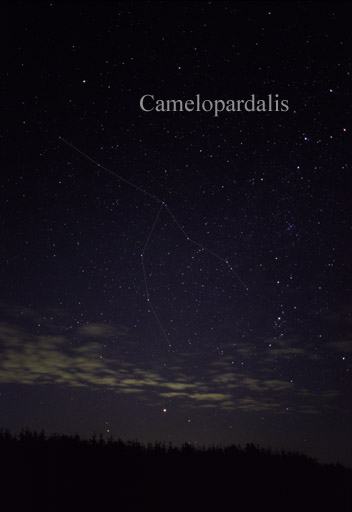Phoenix is the constellation of the southern hemisphere of the sky.Despite this, it can be observed in Russia and Ukraine. It is not so known as Big Dog, Capricorn, Scorpio, Cup, South Crown and other "star drawings", but it is also of interest to observers. What does the constellation Phoenix look like? When and where it can be seen?
History
Phoenix is considered a new constellation.It was introduced only in the XVI century, or rather in 1598, on the globe of Peter Plancius. It became the largest of the twelve constellations proposed by the astronomer. In 1603, Johann Bayer included him in his atlas "Uranometria."
Together with Peacock, Toucan and Crane, the constellationPhoenix belongs to the "Southern Birds". In the sky it occupies an area of 469 square degrees. On many atlases and schemes it is depicted as a pentagon with two stars below and three above (sometimes as a quadrilateral with one star below). They form the body of a bird. From the two extreme upper stars, the broken "lines" depart, resembling wings.
In fact, there are more stars in Phoenix.A total of 68. His brightest star was observed in ancient times. The Arabs called it Ankaa, which means "phoenix". Hence the name of the whole constellation. In the mythology of different cultures, this bird is a symbol of immortality and renewal. She had the ability to burn and regenerate again from the ashes.

Where and how to see?
The constellation of Phoenix is best seen in Australia andSouth Africa. For inhabitants of the Northern Hemisphere of the Earth, it is only partially discovered. It is completely visible only in the southern regions at latitudes below 32 degrees.
When is it better to observe the constellation of Phoenix?In Ukraine and Russia it should be looked for in October. In the north, the constellation borders the Stove and Sculptor, in the west - with Zhuravlym, in the south it is surrounded by the Tukan and Hydra, in the east and southeast there is Eridan.

Phoenix is not very expressive, but notice itit is possible and without optical instruments. His Alpha stands out well between the same bright Ahernar (constellation Eridani) and Fomalhaut (constellation of South Pisces). In Russia it is visible only in the extreme south, and above 47 degrees of latitude does not rise at all.
Twice a year in the constellation you can observe the meteor showers of the Phoenicids. They take place in June and December. Their speed is low, and an hour usually shows up to only three meteors.
Constellation objects
Alpha of the constellation of Phoenix is Ankaa.It is an orange giant of spectral class K0 with a visible value of 2.4, slowly turning into a white dwarf. From the Earth the star is at a distance of 80 light years. In addition to it, Phoenix has six more stars with visibility brighter than 4 magnitudes.
The second brightest star, like Ankaa, isdouble. Both components of the Beta Phoenix are yellow giants of the spectral class G8. Their total value is 3.2. The rotation period of these stars is 170 terrestrial years.
Zeta Phoenix is of greater interest. Its system includes four stars. They are at a distance of 300 light years from us, and their combined apparent magnitude is 3.94.

Within the constellation there are also severalgalaxies. The spiral galaxy NGC 625 is rather dull. It is difficult to detect without a telescope. Galaxy W2332-5056 was seen only in 2013. It contains two black holes whose gravitational fields intersect. Most likely, with time they will merge into one big black hole.












